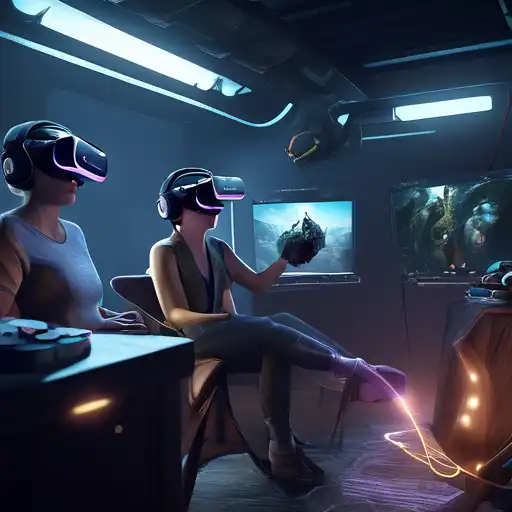Introduction to Virtual Reality
Virtual Reality (VR) has transformed the way we interact with digital content, offering immersive experiences that were once the stuff of science fiction. This guide will walk you through the essentials of creating captivating VR experiences that engage and astonish users.
Understanding VR Technology
Before diving into creation, it's crucial to understand the technology behind VR. VR headsets, such as the Oculus Rift and HTC Vive, provide the visual and auditory foundation, while motion tracking and hand controllers add interactivity.
Designing for Immersion
Immersion is the key to a successful VR experience. This involves creating a believable world that responds to the user's actions. Considerations include spatial audio, realistic physics, and intuitive controls.
Spatial Audio
Spatial audio mimics how sound behaves in the real world, enhancing the sense of presence. Tools like FMOD and Wwise can help integrate spatial audio into your VR project.
Realistic Physics
Physics engines, such as Unity's PhysX, allow objects in VR to interact in a way that feels natural, further deepening immersion.
Developing Your VR Experience
With a solid understanding of VR technology and design principles, you're ready to start developing. Platforms like Unity and Unreal Engine offer robust tools for VR development, supporting everything from simple prototypes to complex simulations.
Choosing the Right Platform
Selecting the right development platform depends on your project's needs. Unity is known for its ease of use and flexibility, while Unreal Engine offers high-fidelity graphics.
Testing and Iteration
Testing is critical in VR development. Regular user feedback can help identify issues with comfort, usability, and immersion, guiding iterative improvements.
Optimizing for Performance
VR applications demand high performance to maintain immersion. Techniques such as level of detail (LOD) scaling and occlusion culling can help ensure smooth framerates.
Publishing and Distribution
Once your VR experience is polished, consider platforms like SteamVR, Oculus Store, or Viveport for distribution. Each platform has its own set of guidelines and audience.
Conclusion
Creating immersive VR experiences is a challenging yet rewarding endeavor. By understanding the technology, focusing on immersion, and following best practices in development and optimization, you can craft experiences that captivate and delight users.
For more insights into VR development, check out our guide on VR development tools.
